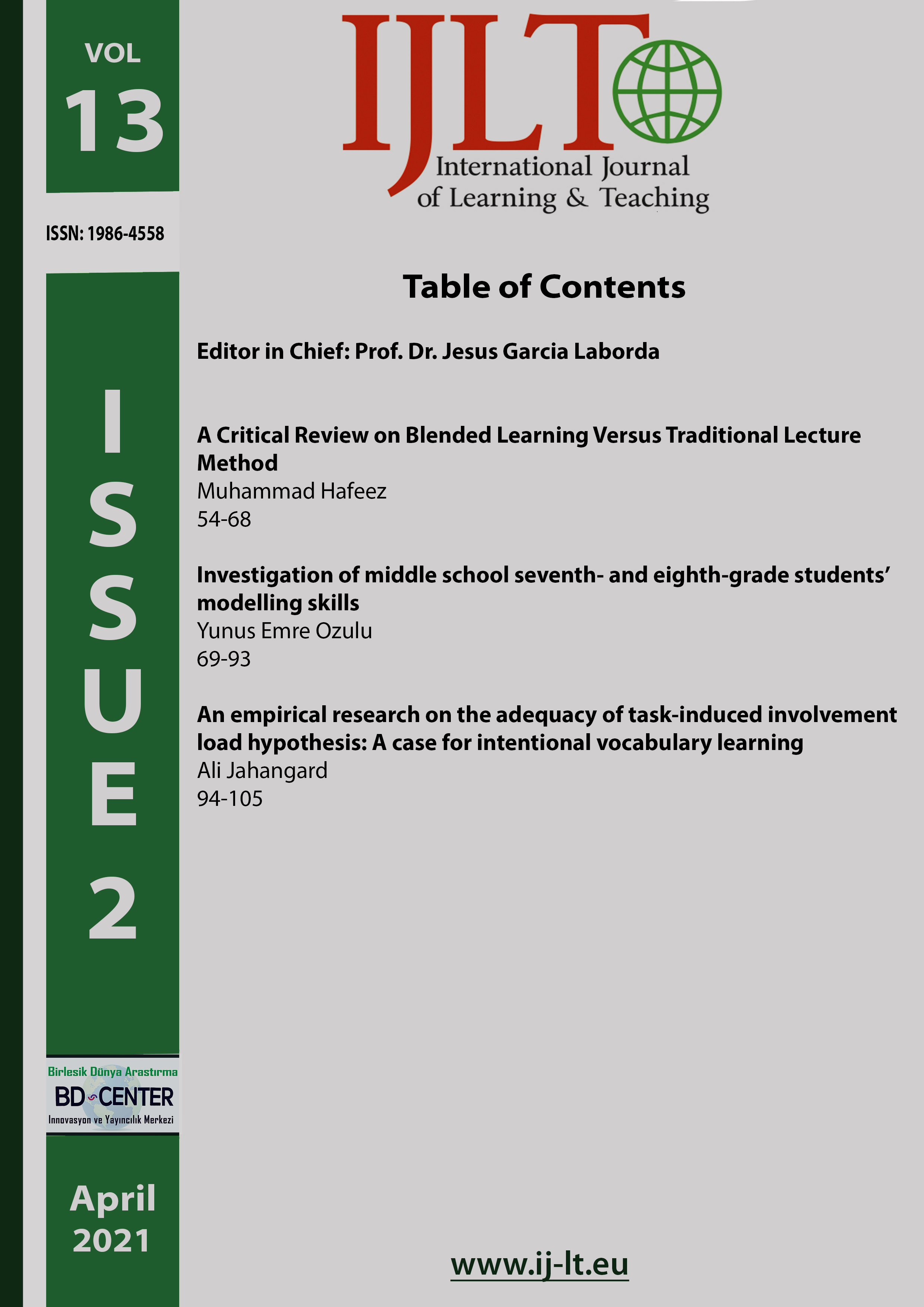A Critical Review on Blended Learning Versus Traditional Lecture Method
Main Article Content
Abstract
From the beginning of 21st century, the leaning stratigies have been changed from traditional to information and communication based. A critical review of published articles about blended and traditional leaning stratigies has been conducted to highlight the importance and significance of both learning stratigies. Thirty-six (36) research articles published in various databases in various disciplines have been selected for review. The review of literature showed that in most of the studies, the blended learning strategy proved to be more effective learning strategy against the traditional lecture method. From thirty-six published articles reviewed, twenty-five studies showed a statistically more significance value in blended learning approach for academic achievement, critical and creative skills in various disciplines. So, on the basis of this study, it is strongly recommended that blended learning strategy must be applied to achieve high academic and professional results.
Downloads
Article Details

This work is licensed under a Creative Commons Attribution 4.0 International License.
Authors who publish with this journal agree to the following terms:
- Authors retain copyright and grant the journal right of first publication with the work simultaneously licensed under a Creative Commons Attribution License that allows others to share the work with an acknowledgement of the work's authorship and initial publication in this journal.
- Authors are able to enter into separate, additional contractual arrangements for the non-exclusive distribution of the journal's published version of the work (e.g., post it to an institutional repository or publish it in a book), with an acknowledgement of its initial publication in this journal.
- Authors are permitted and encouraged to post their work online (e.g., in institutional repositories or on their website) prior to and during the submission process, as it can lead to productive exchanges, as well as earlier and greater citation of published work (SeeThe Effect of Open Access).
